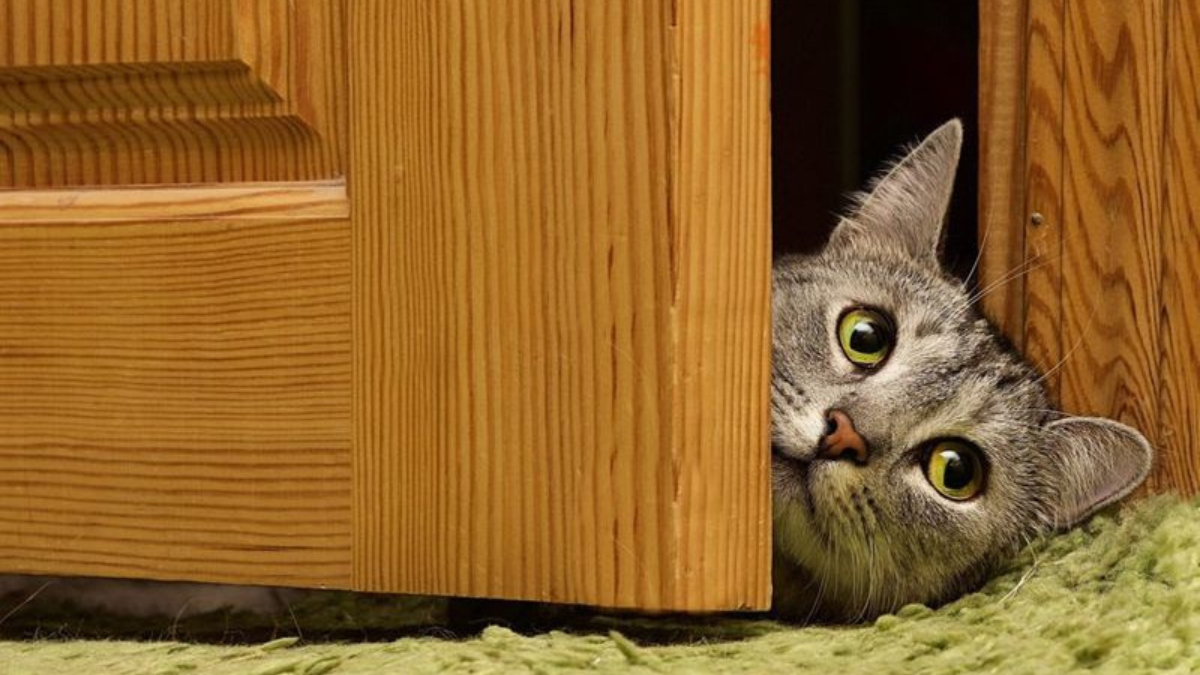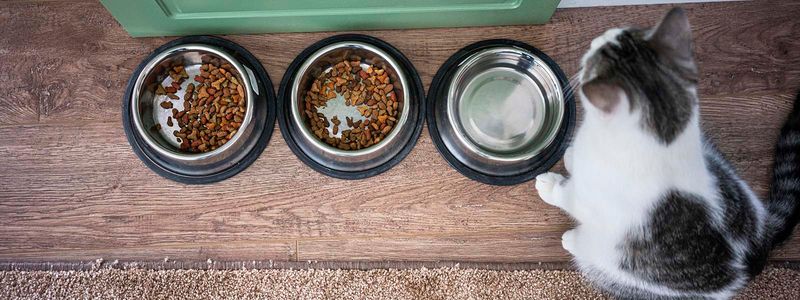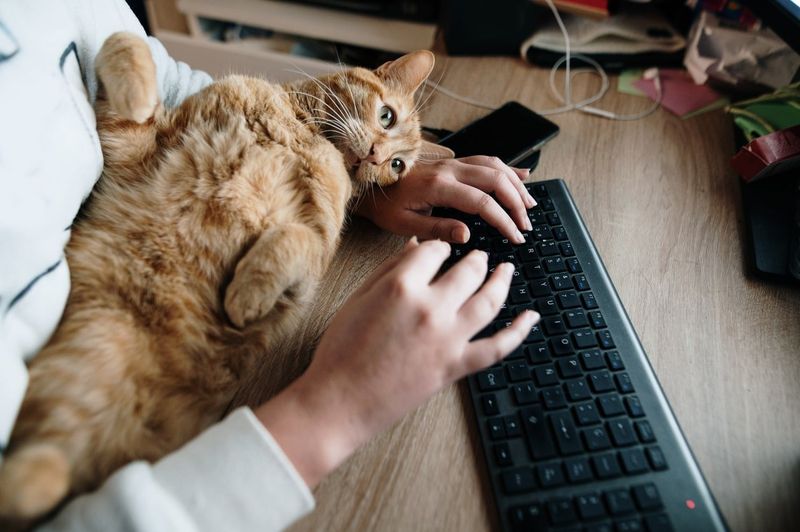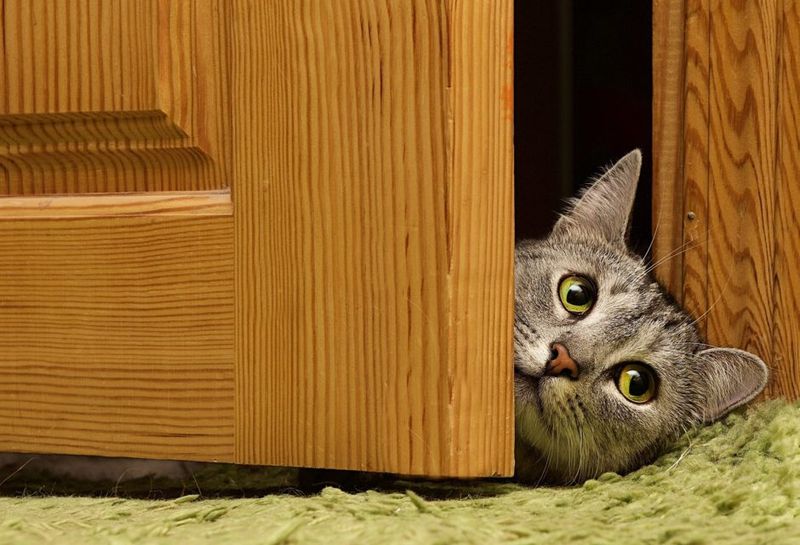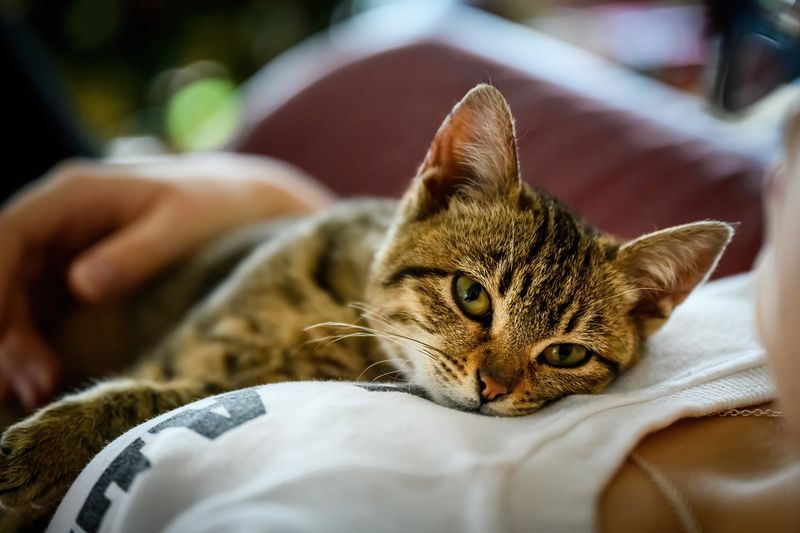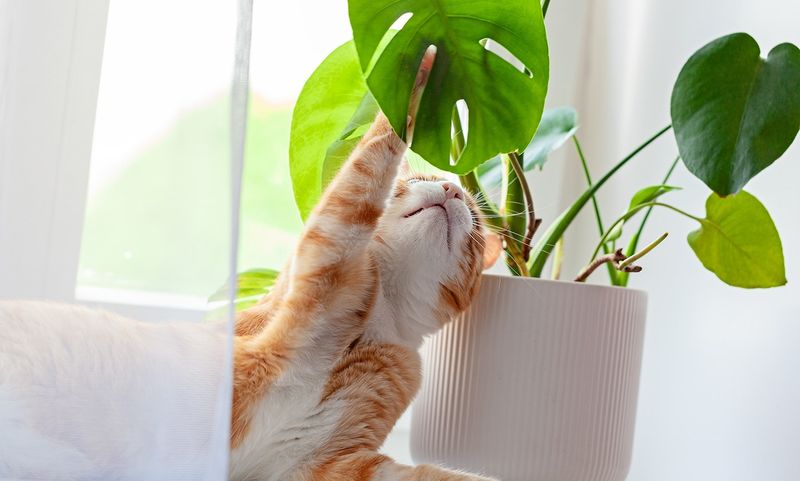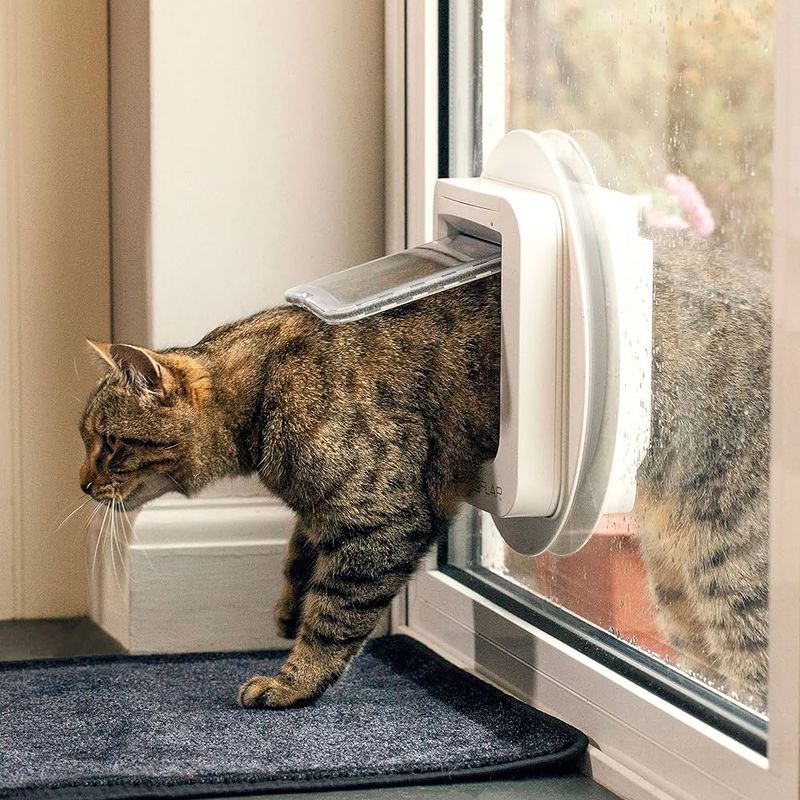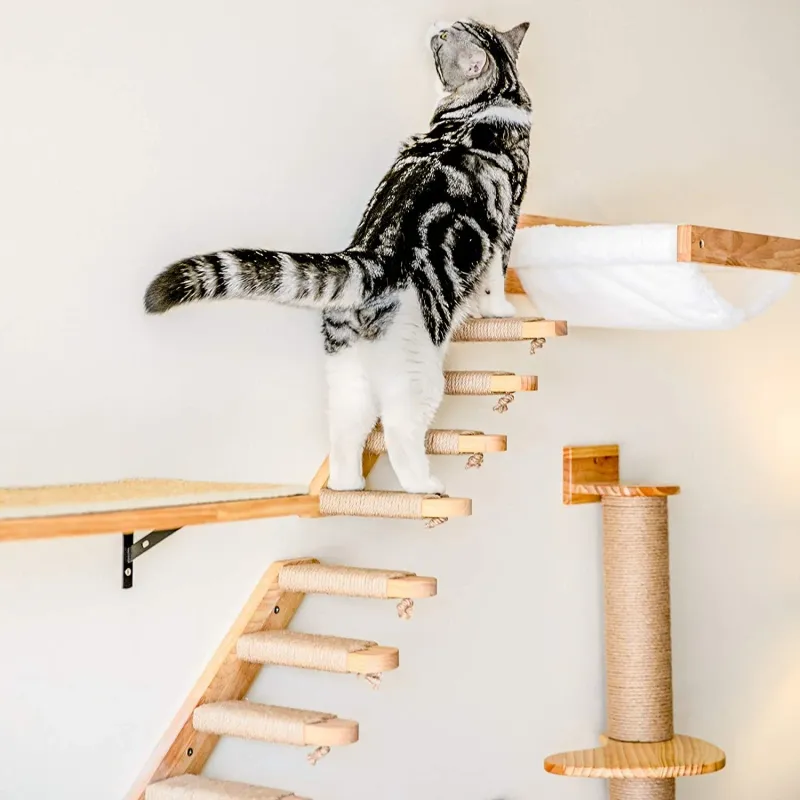📖 Table of Content:
- 1. The 3 AM Wake-Up Call
- 2. The Fake-Out Food Complaint
- 3. The Strategic Keyboard Occupation
- 4. The Doorway Indecision Drama
- 5. The Affection Ambush
- 6. The Forbidden Object Fixation
- 1. Establish a Consistent Feeding Schedule
- 2. Create Designated Computer-Free Zones
- 3. Use Food Puzzles for Mealtime Enrichment
- 4. Install a Microchip-Activated Pet Door
- 5. Practice Strategic Ignoring Techniques
- 6. Provide Alternative Climbing Spaces
Cats have a way of wrapping humans around their little paws without much effort. With a single look or a subtle gesture, they often get exactly what they want. Their charm isn’t accidental—it’s a finely tuned tool developed over centuries of coexisting with people.
Behind those innocent eyes lies a sharp and strategic mind. Cats observe routines, learn responses, and subtly guide behavior to serve their preferences. From manipulating feeding schedules to claiming the most comfortable seat, they tend to win more battles than they lose.
These behaviors aren’t just cute—they reveal how deeply attuned cats are to human habits. Understanding the subtle tactics they use can reveal just how much control they really have. Recognizing the signs is the first step to balancing the dynamic between cat and human.
1. The 3 AM Wake-Up Call
Your peaceful slumber gets shattered by a furry paw to the face or loud meowing precisely when you’re in deep sleep. This isn’t random timing—cats deliberately choose the early morning hours when you’re most vulnerable and likely to give in to their demands.
They’ve learned that persistence pays off. Once you’ve fed them at 3 AM even once, they’ve trained you to respond to their nighttime antics. The behavior gets reinforced every time you react, creating a cycle that’s hard to break.
Many cat owners surrender to this manipulation without realizing they’re being played by a master strategist with whiskers.
2. The Fake-Out Food Complaint
Fresh food sits untouched in the bowl while your cat stares at you accusingly. The dramatic meowing suggests starvation, yet the bowl remains full. This calculated performance aims to score premium treats or fresher offerings.
Cats naturally prefer fresh food and know exactly how to make you feel guilty about the perfectly good meal you’ve already provided. They’ll maintain eye contact while dramatically pawing near their bowl, communicating their disappointment in your catering services.
Some particularly clever cats will even cover their food with their paw as if burying waste, a clear insult to your culinary offerings that often works to get something better.
3. The Strategic Keyboard Occupation
Right when you’re in the middle of important work, your cat magically appears on your keyboard. This isn’t a coincidence—it’s a calculated attention-seeking tactic. Cats observe your focus on screens and deliberately position themselves between you and the object of your attention.
The keyboard offers additional benefits: it’s warm from the computer’s heat and shaped perfectly for a cat-sized lounge spot. Your hands typing provide the movement and attention they crave, making it the perfect target for feline interruption.
Many cats have learned that this behavior reliably redirects your focus from work to them, which is exactly their goal.
4. The Doorway Indecision Drama
Standing at the door, your cat seems desperate to go out. The moment you open it, they freeze, contemplating life’s great mysteries while cold air rushes in. This isn’t indecision—it’s a power play designed to make you their personal doorman.
Cats enjoy controlling their environment and the humans within it. By making you wait while they decide, they’re asserting dominance over your time and patience. The longer you stand there holding the door, the more they’ve succeeded in their manipulation.
Some particularly skilled cats will step halfway through before changing their mind, maximizing both your frustration and their satisfaction with this simple control tactic.
5. The Affection Ambush
One minute your cat wants nothing to do with you, the next they’re purring and rubbing against your legs. This sudden affection almost always coincides with mealtime or when you’re holding something they want. Cats strategically deploy cuddles and purrs when they have an agenda.
They’ve learned that humans are suckers for affection and will reward loving behavior with treats, playtime, or attention. The head-butting, purring, and kneading are powerful tools in their manipulation arsenal.
Even the most independent cats know exactly when to turn on the charm to get what they want, making you feel special while they execute their master plan.
6. The Forbidden Object Fixation
That houseplant you specifically protected or the shelf you declared off-limits becomes your cat’s obsession. They stare at it intensely, making deliberate eye contact before slowly reaching toward it. This isn’t random mischief—it’s a calculated boundary test.
Cats naturally push limits to understand exactly what they can get away with. By focusing on forbidden items, they’re gathering information about your reactions and consistency. Many cats will bat at the object while watching for your response, learning exactly how far they can push.
The more dramatically you react, the more interesting the forbidden object becomes, creating an irresistible game of psychological chicken.
1. Establish a Consistent Feeding Schedule
Automatic feeders become your secret weapon against early morning wake-up calls. These devices release food at programmed times, breaking the association between your awakening and their breakfast. Your cat learns the machine controls mealtime, not their theatrics.
Stick firmly to feeding times regardless of meowing protests. Cats thrive on routine and will adjust their internal clocks accordingly. Within a week or two, most cats stop the early alarms when they realize the performance doesn’t work.
For particularly persistent cats, placing their last meal right before your bedtime can help prevent hunger-driven wake-ups. The consistency matters more than the exact timing.
2. Create Designated Computer-Free Zones
Combat keyboard occupation by setting up a cozy cat bed right next to your workspace. The strategic placement gives your cat the closeness they crave without disrupting your work. Heating pads or sun-catching spots make these areas irresistibly appealing.
Positive reinforcement works wonders here. Whenever your cat chooses their special spot over your keyboard, reward them with gentle praise or treats. They’ll quickly learn that their designated area yields more benefits than keyboard obstruction.
For persistent keyboard crashers, a decoy keyboard or laptop-sized box placed nearby often satisfies their need to mimic your behavior while leaving your actual work surface free.
3. Use Food Puzzles for Mealtime Enrichment
Food puzzles transform eating from a passive activity into a stimulating challenge. These toys require cats to work for their meals, tapping into their natural hunting instincts while distracting them from their food critic tendencies. The mental engagement often matters more than the food quality.
Cats evolved as hunters who work for every meal. Puzzle feeders satisfy this deep-rooted need while slowing down consumption. The effort required to extract food pieces makes the reward more satisfying and reduces complaints about the menu.
Rotating between different puzzle types keeps the experience fresh and mentally stimulating, preventing your cat from getting bored with the challenge.
4. Install a Microchip-Activated Pet Door
Technology solves the doorway dilemma with microchip-activated pet doors that respond only to your cat’s implanted chip. These smart doors eliminate your role as doorman while giving your cat the independence they crave. The control returns to your hands while satisfying their need for freedom.
These doors can be programmed with curfew settings, automatically locking during nighttime hours or bad weather. Your cat quickly learns the rules of when outdoor access is available without the power struggle of human involvement.
For indoor cats, similar technology can control access to specific rooms, creating boundaries without requiring your constant enforcement.
5. Practice Strategic Ignoring Techniques
Breaking manipulation cycles requires consistent response patterns. When your cat engages in attention-seeking behavior, completely ignore them—no eye contact, talking, or physical response. The moment they stop the unwanted behavior, provide attention and positive reinforcement.
This technique works because cats quickly connect their actions with results. Behaviors that yield no reaction become boring and pointless to continue. Patience is crucial, as the behavior often intensifies before improving when cats test if their usual tactics still work.
For maximum effectiveness, everyone in the household must follow the same approach. Consistency sends a clear message that certain manipulation strategies have permanently stopped working.
6. Provide Alternative Climbing Spaces
Cat trees and wall shelves redirect your cat’s forbidden climbing impulses to acceptable locations. Placing these alternatives near temptation zones gives your cat a legal option that satisfies the same desire. The height and exploration needs get met without breaking your rules.
Make approved climbing spots more attractive than forbidden ones by adding treats, catnip, or comfortable resting areas at the top. Cats naturally seek height for security and observation, so providing these opportunities in approved locations reduces their interest in your counters or shelves.
Regularly rotating toys on these structures keeps them novel and interesting, maintaining their appeal over the forbidden alternatives.
